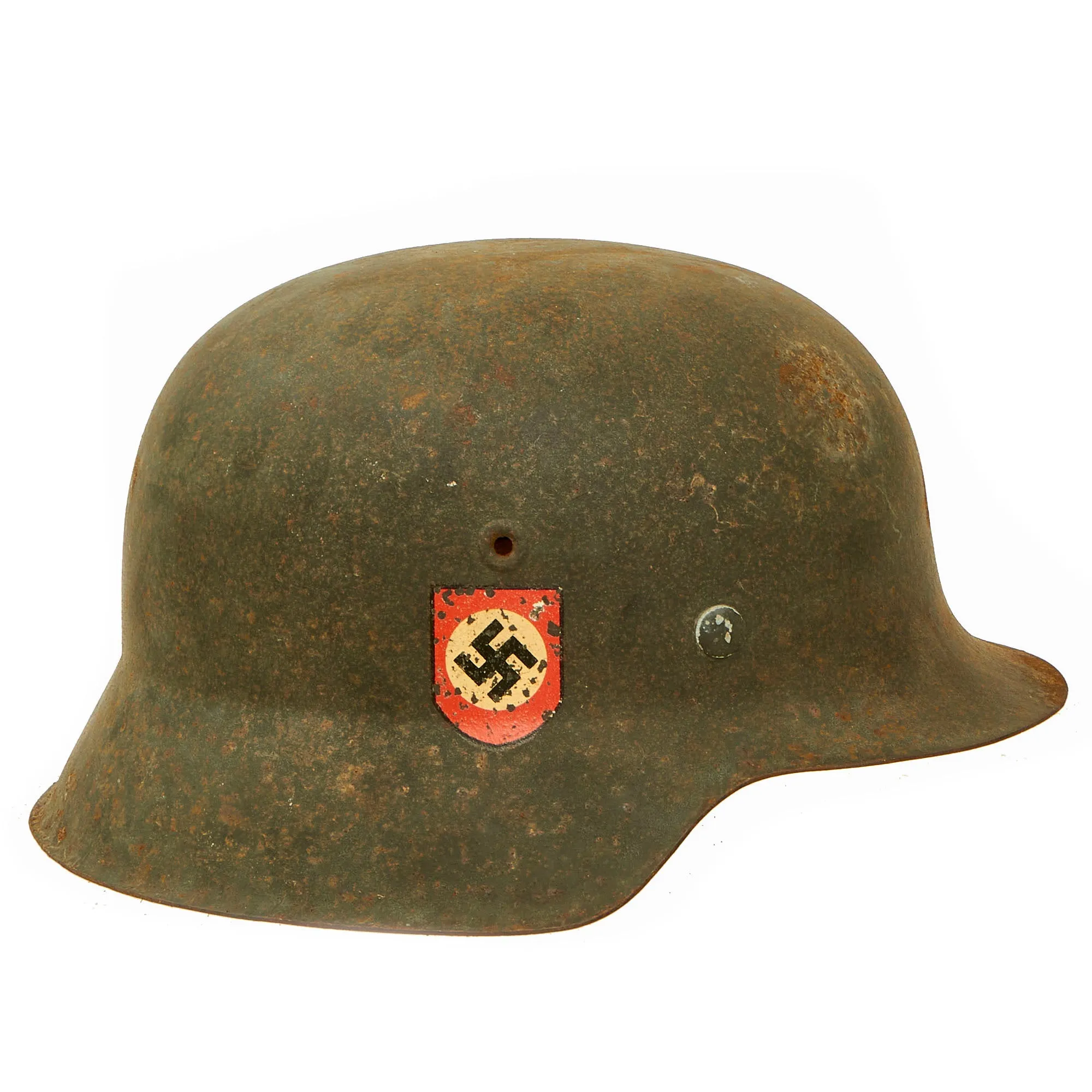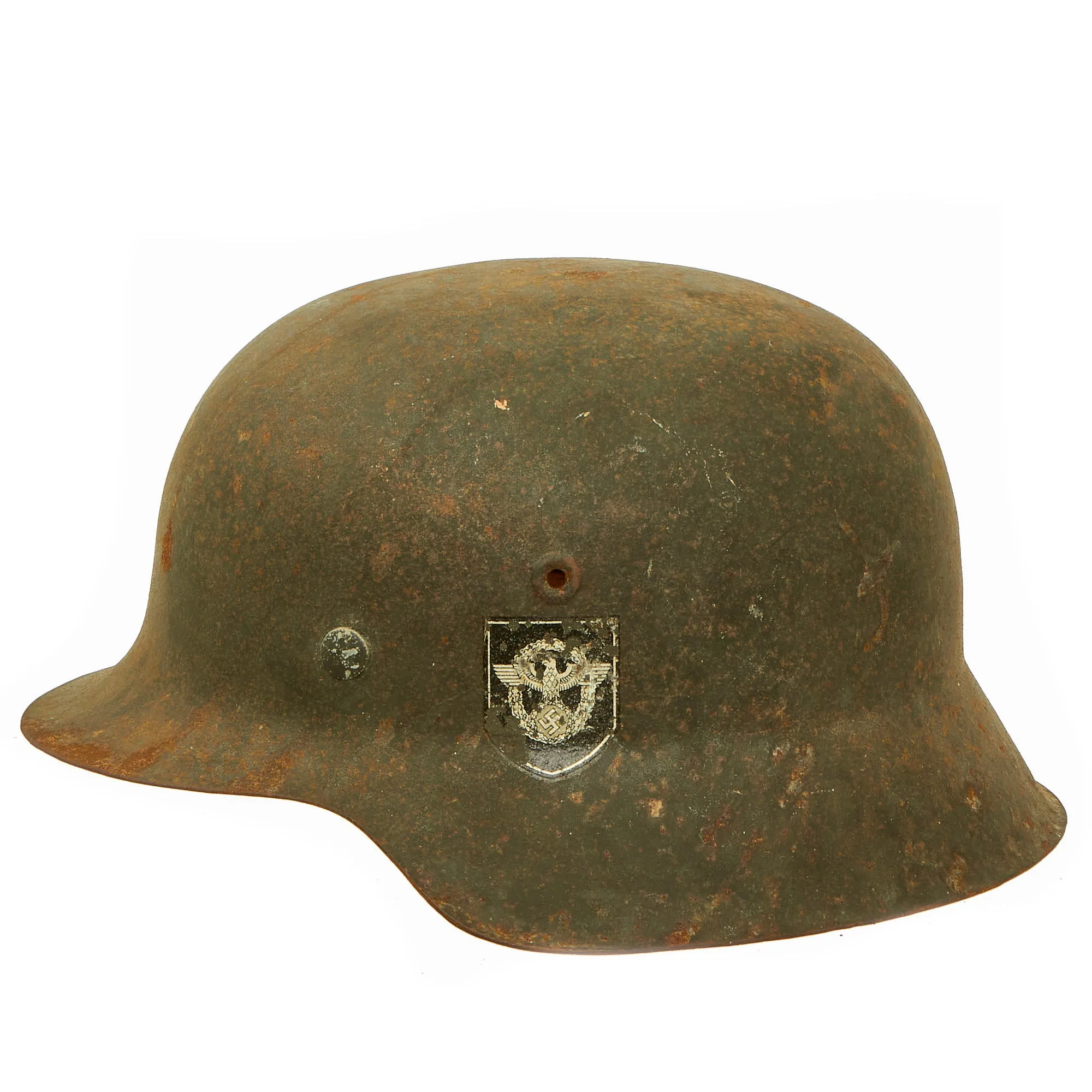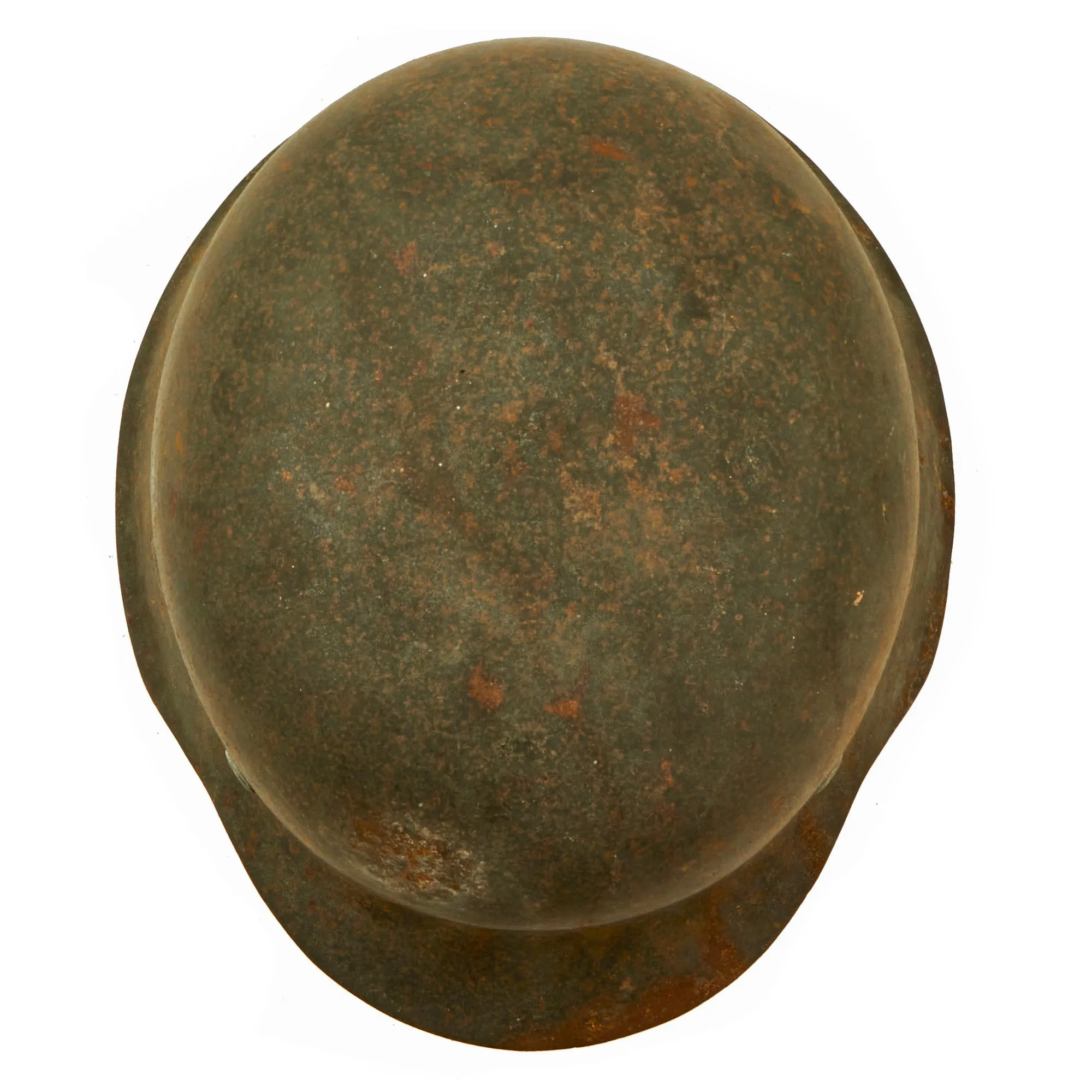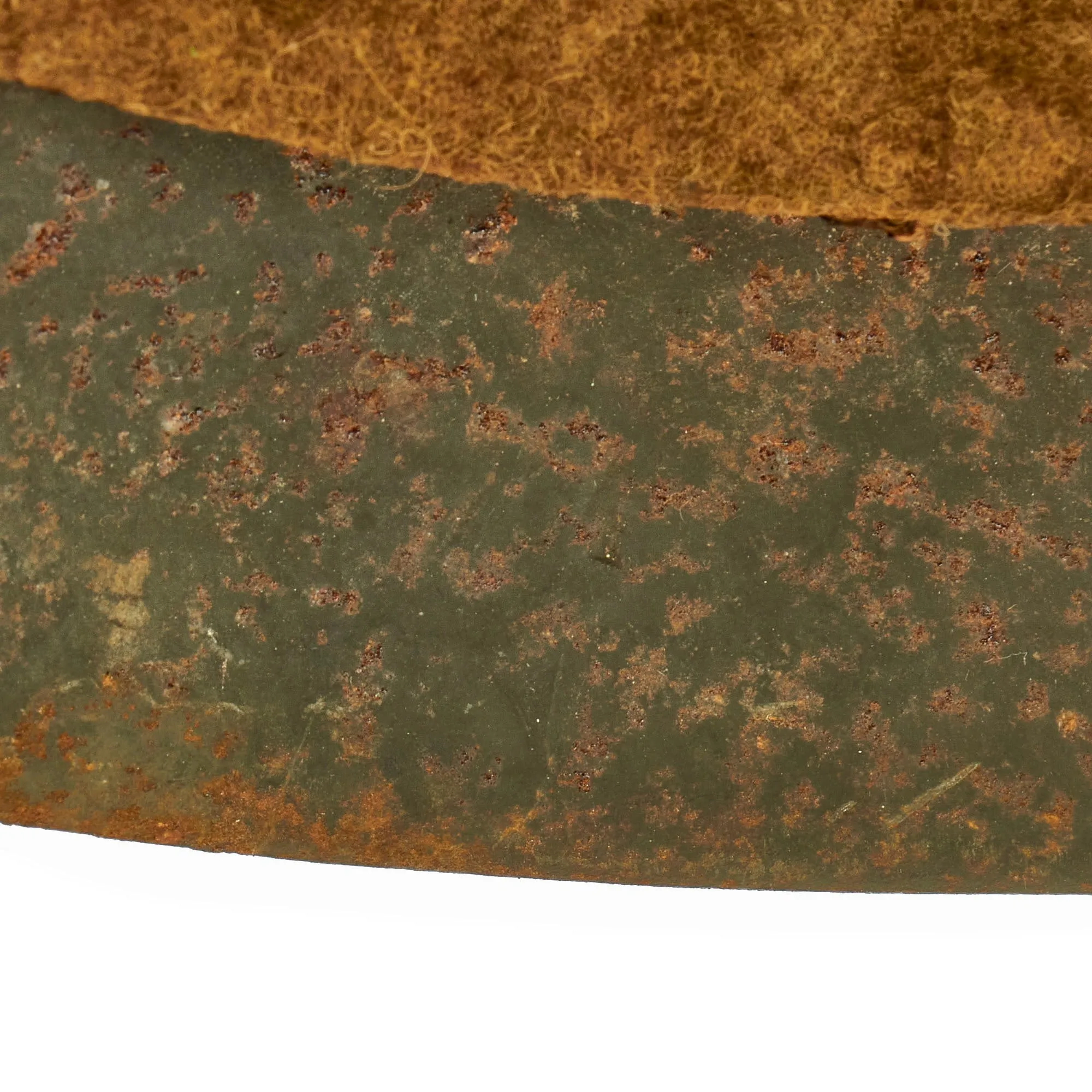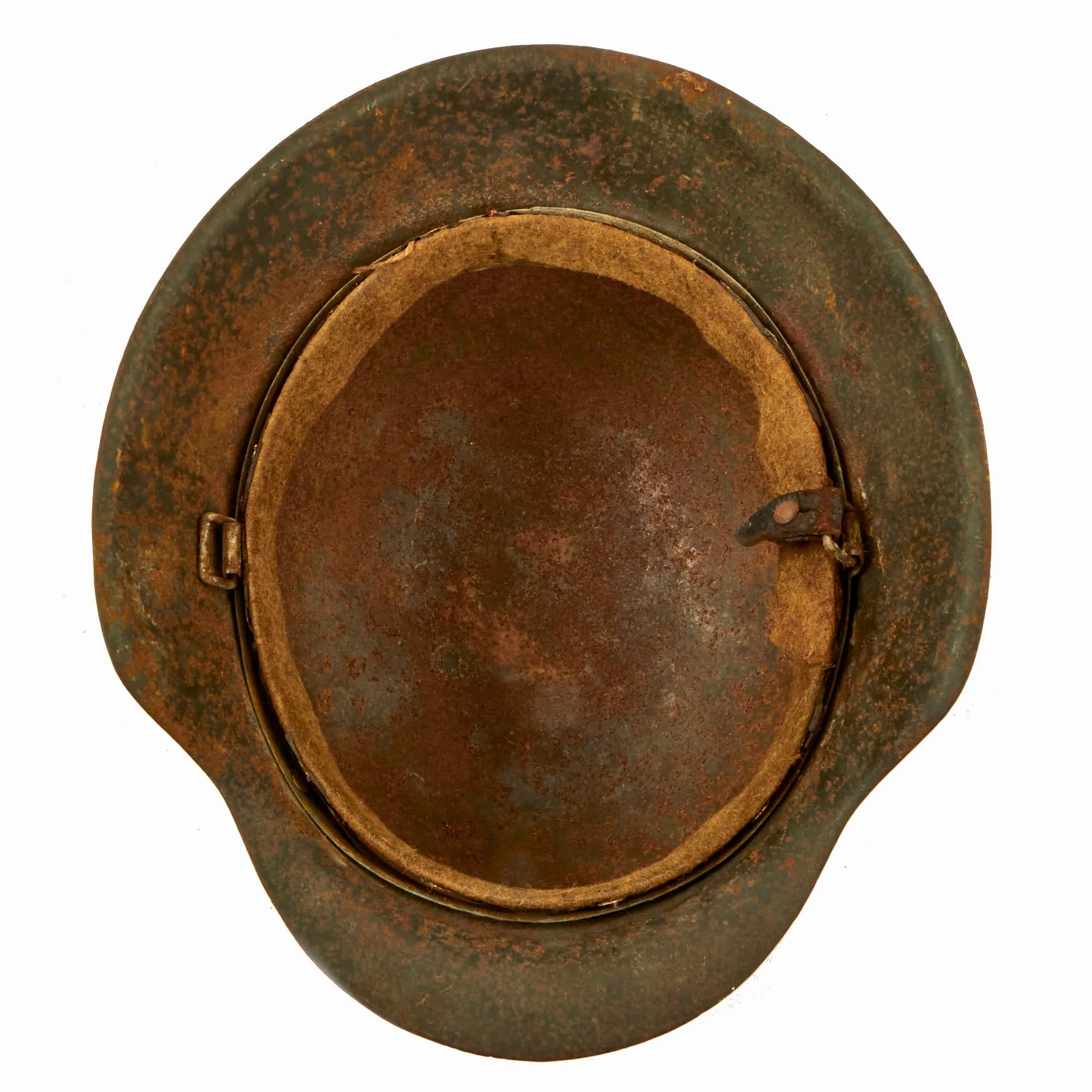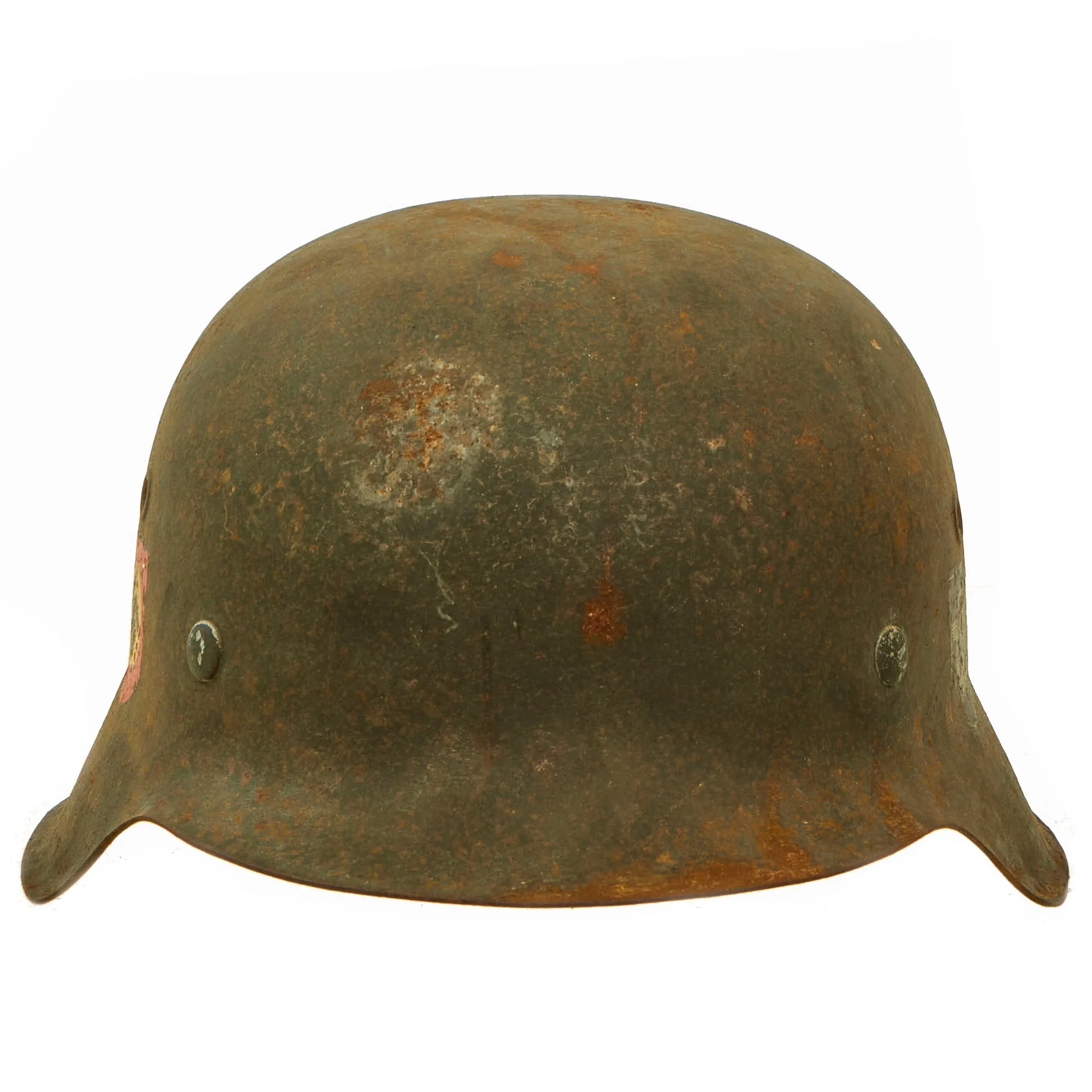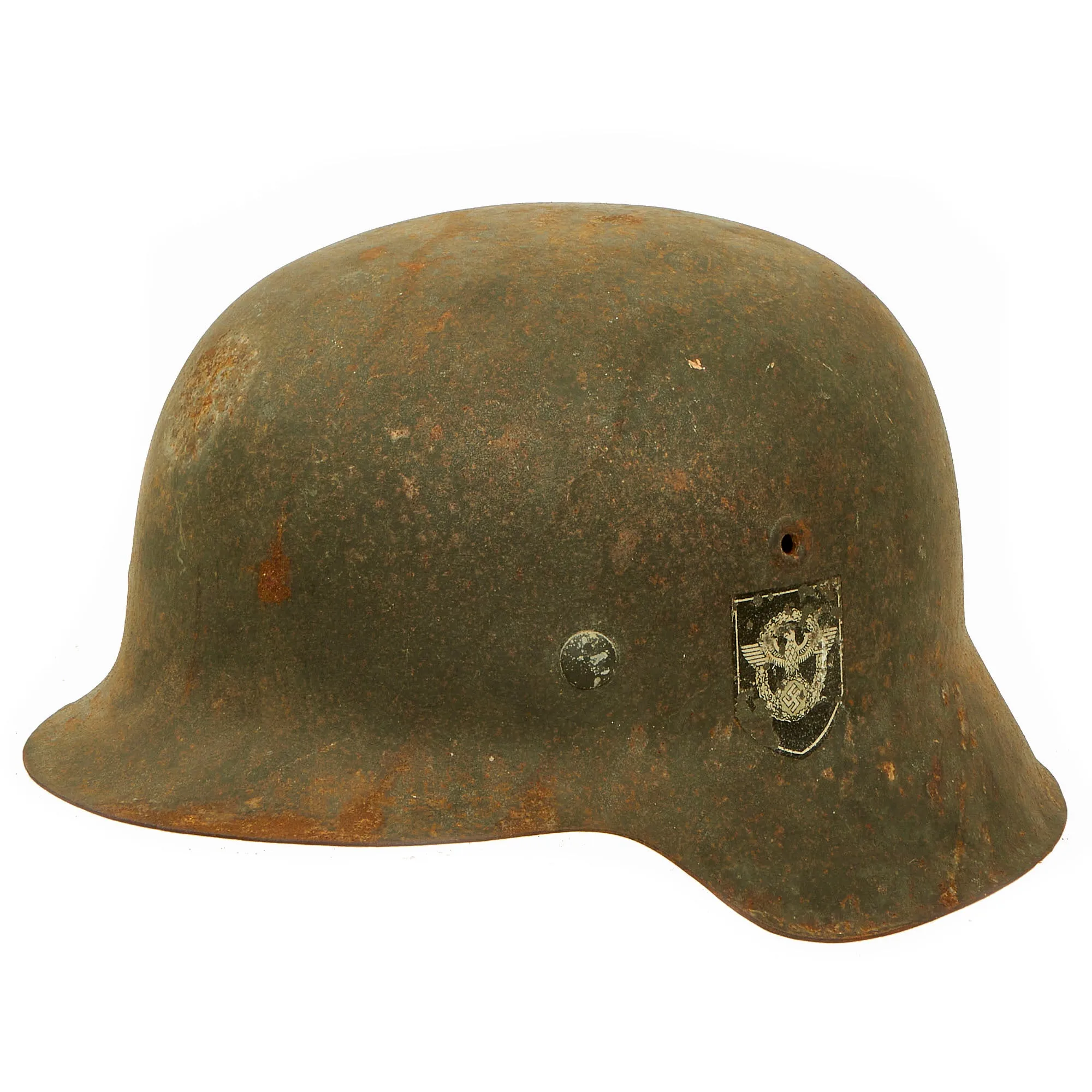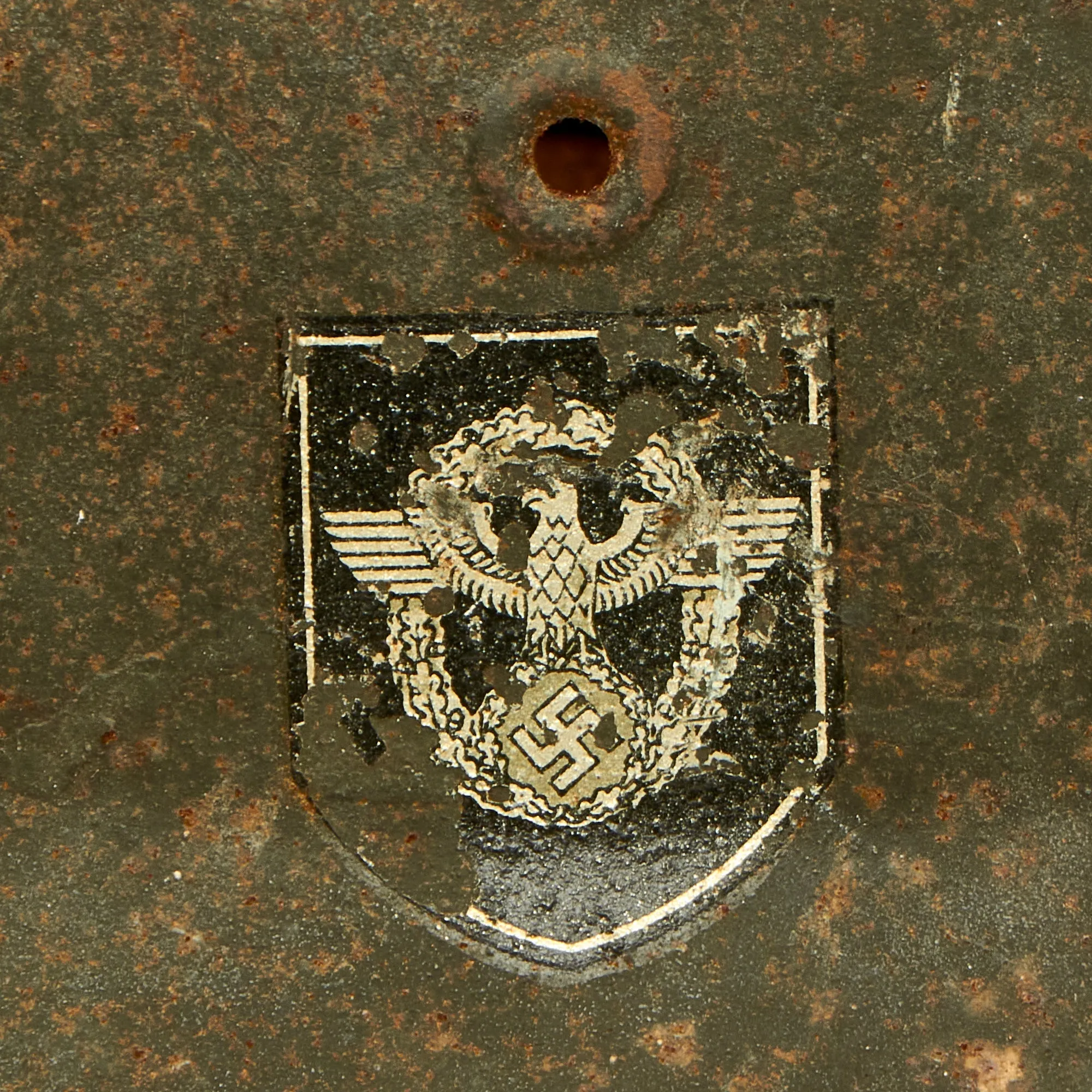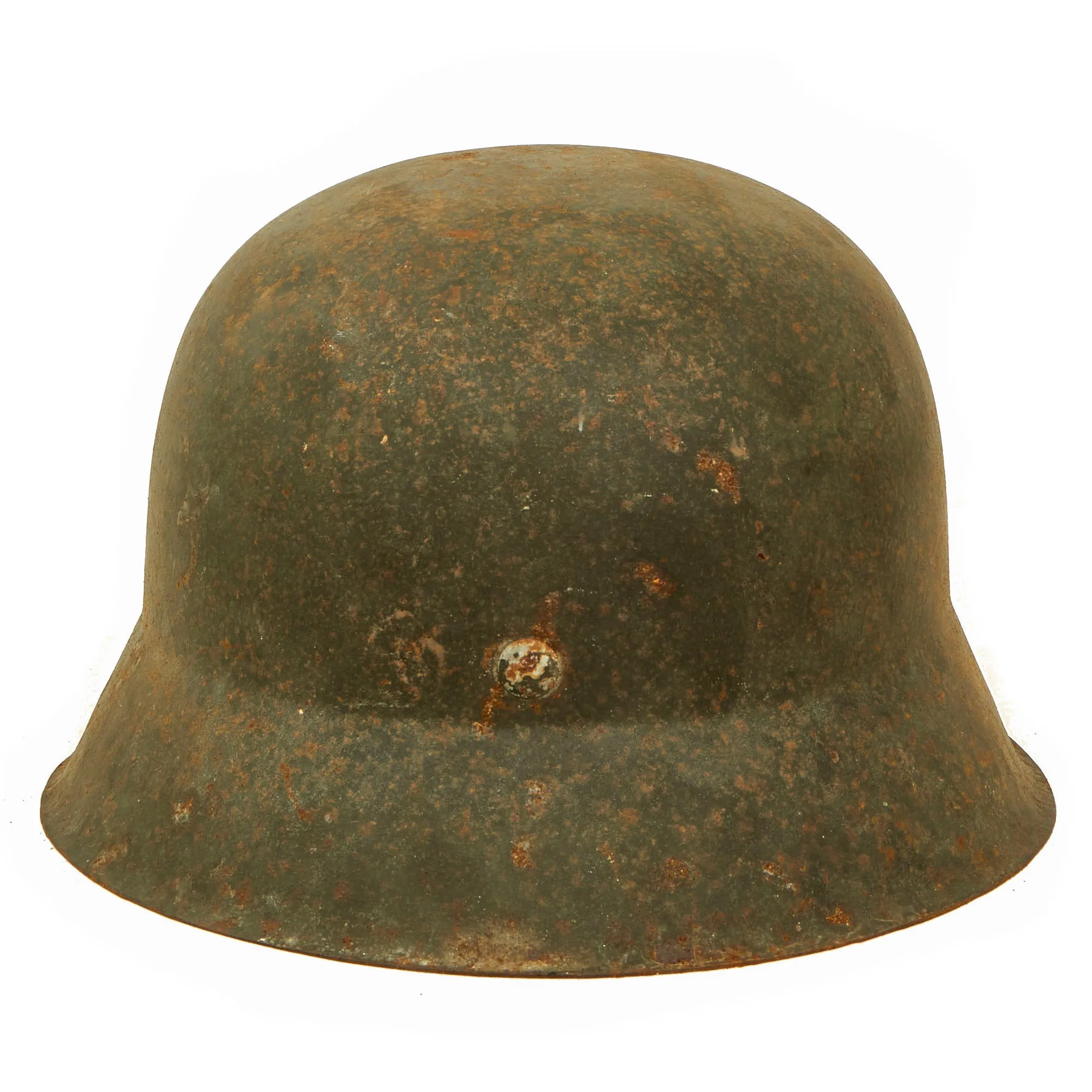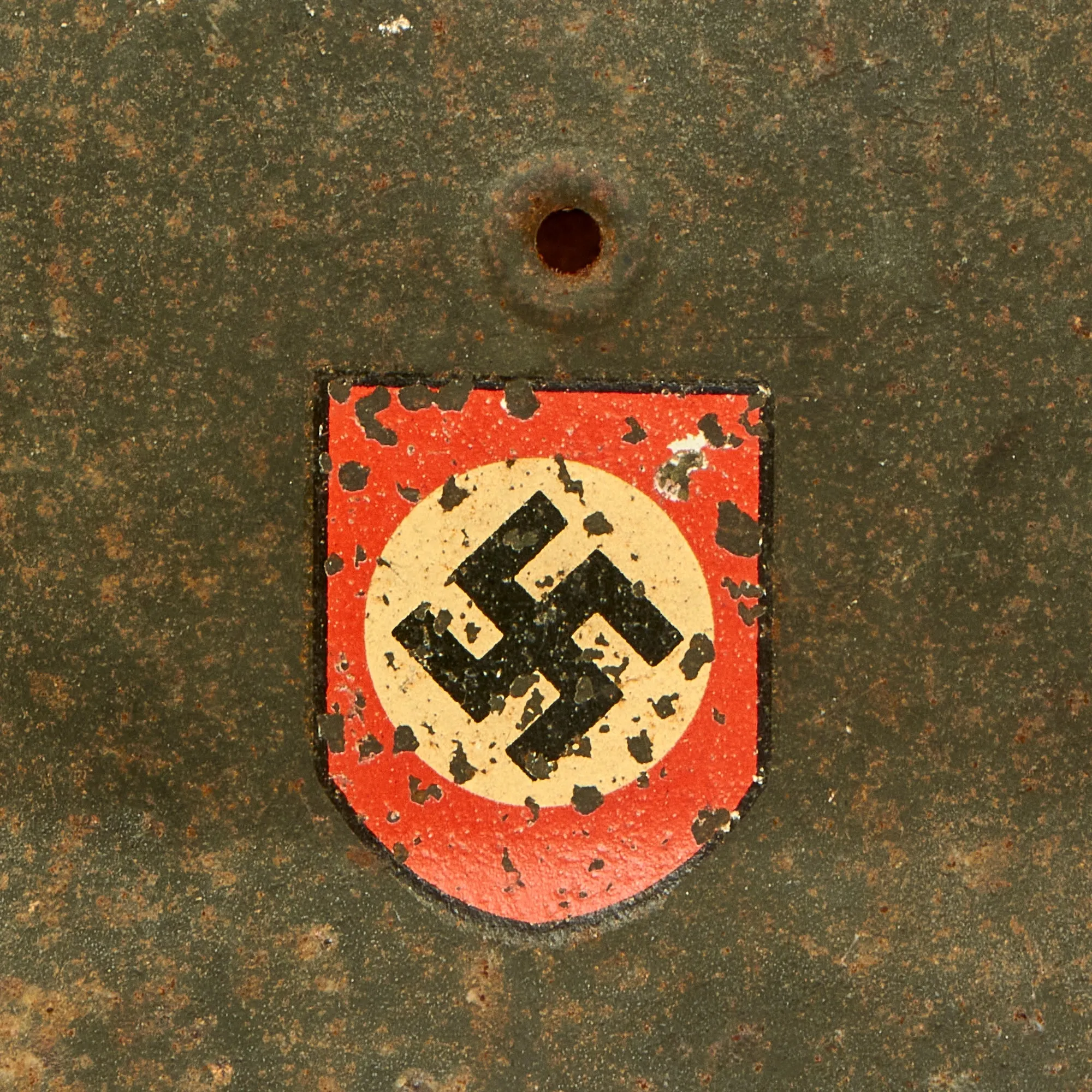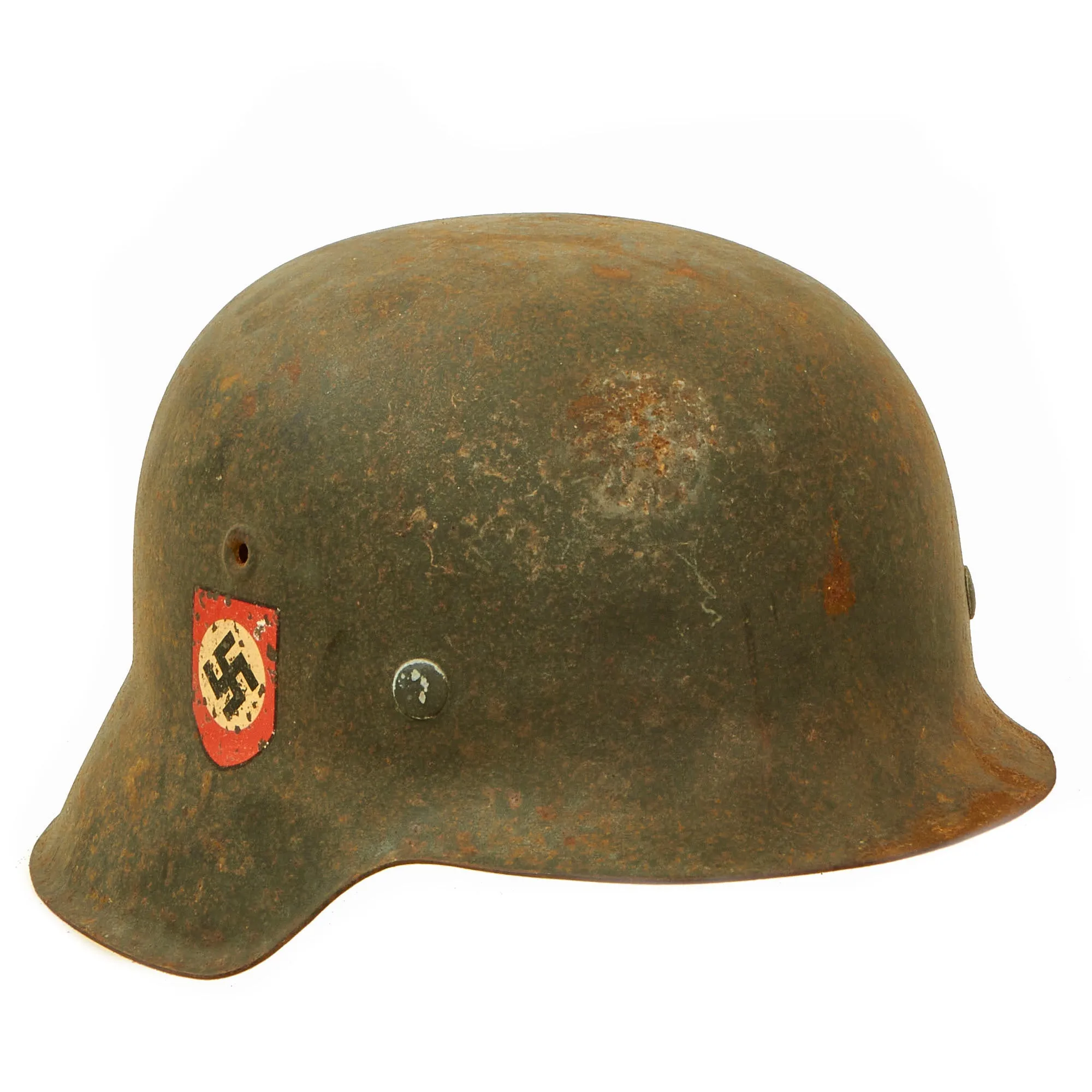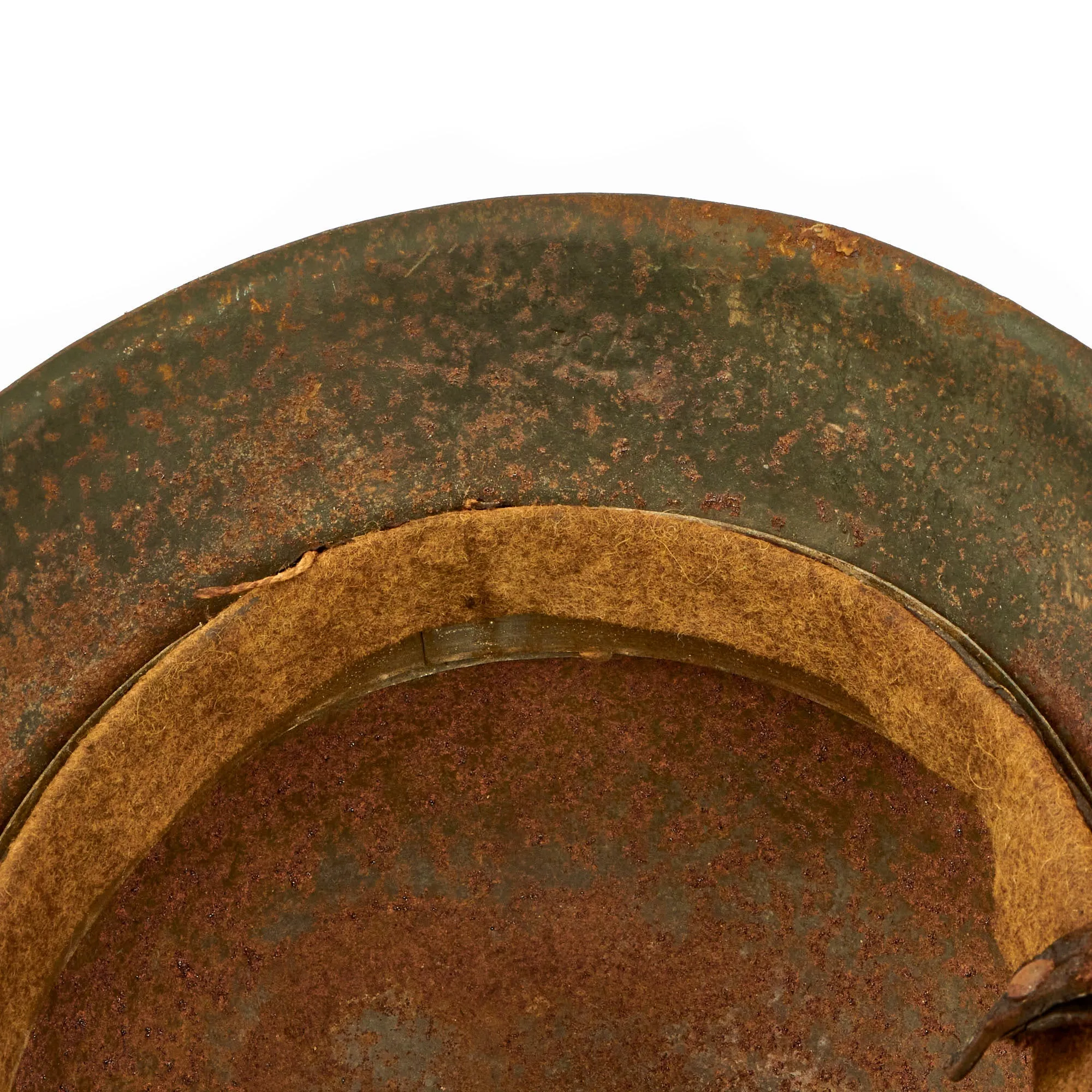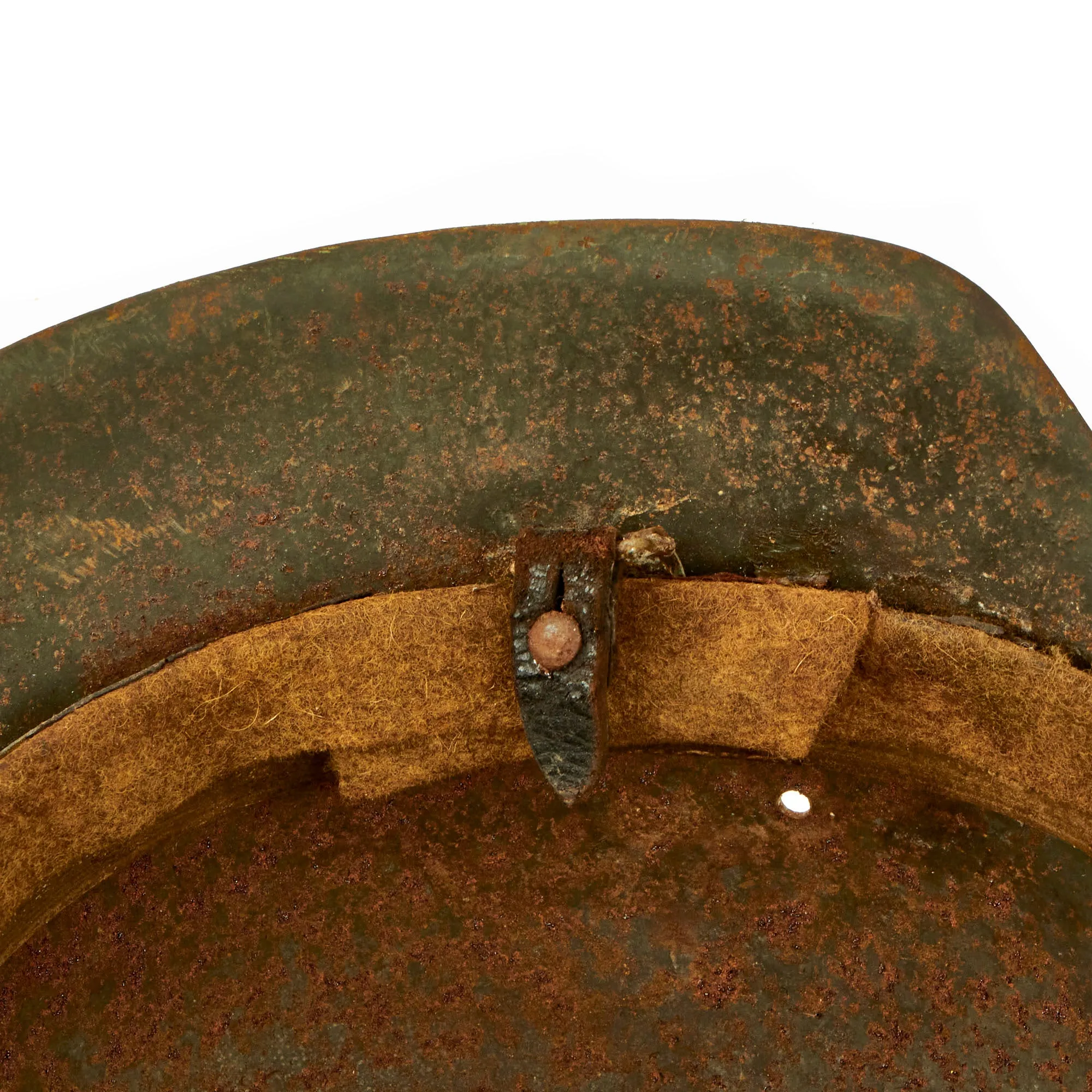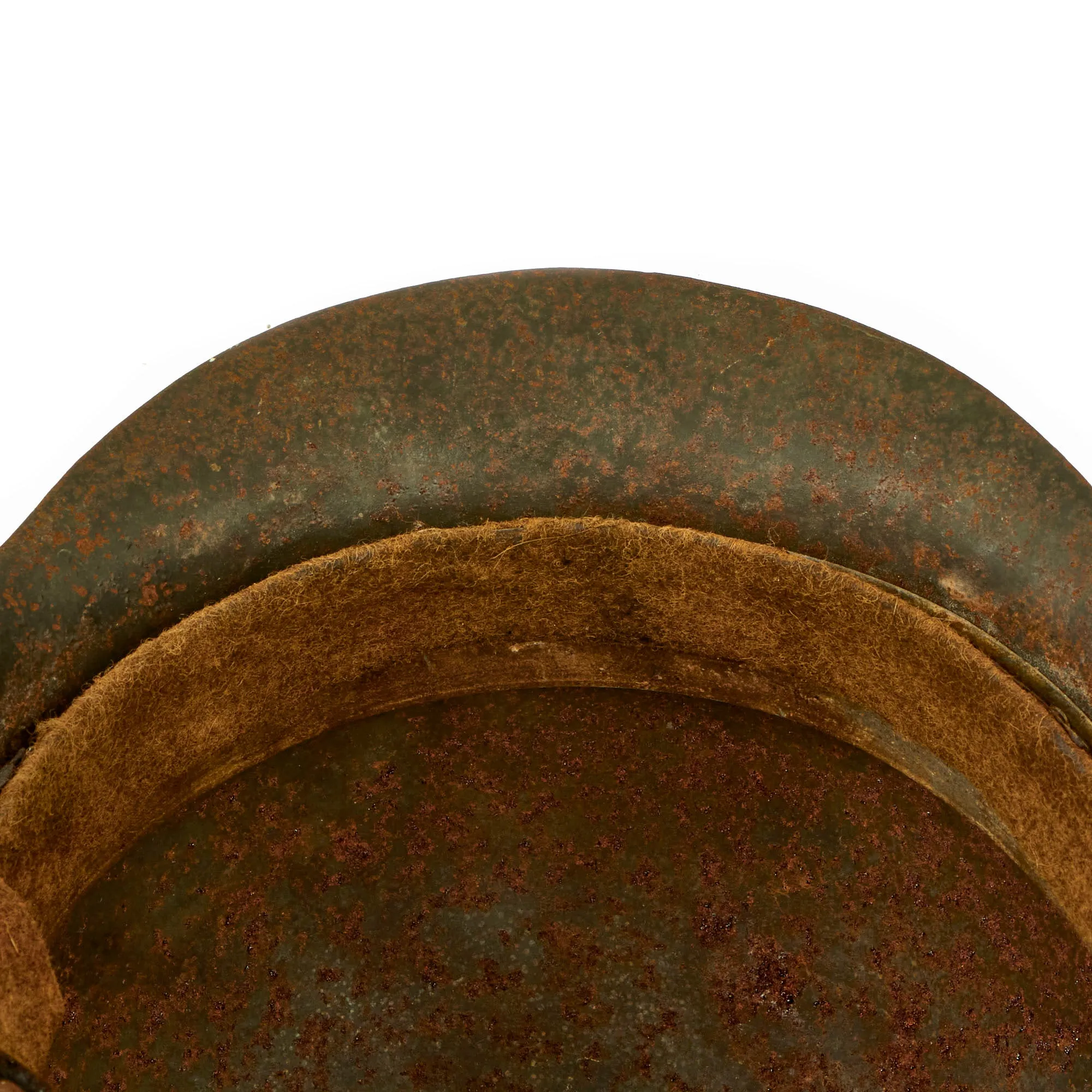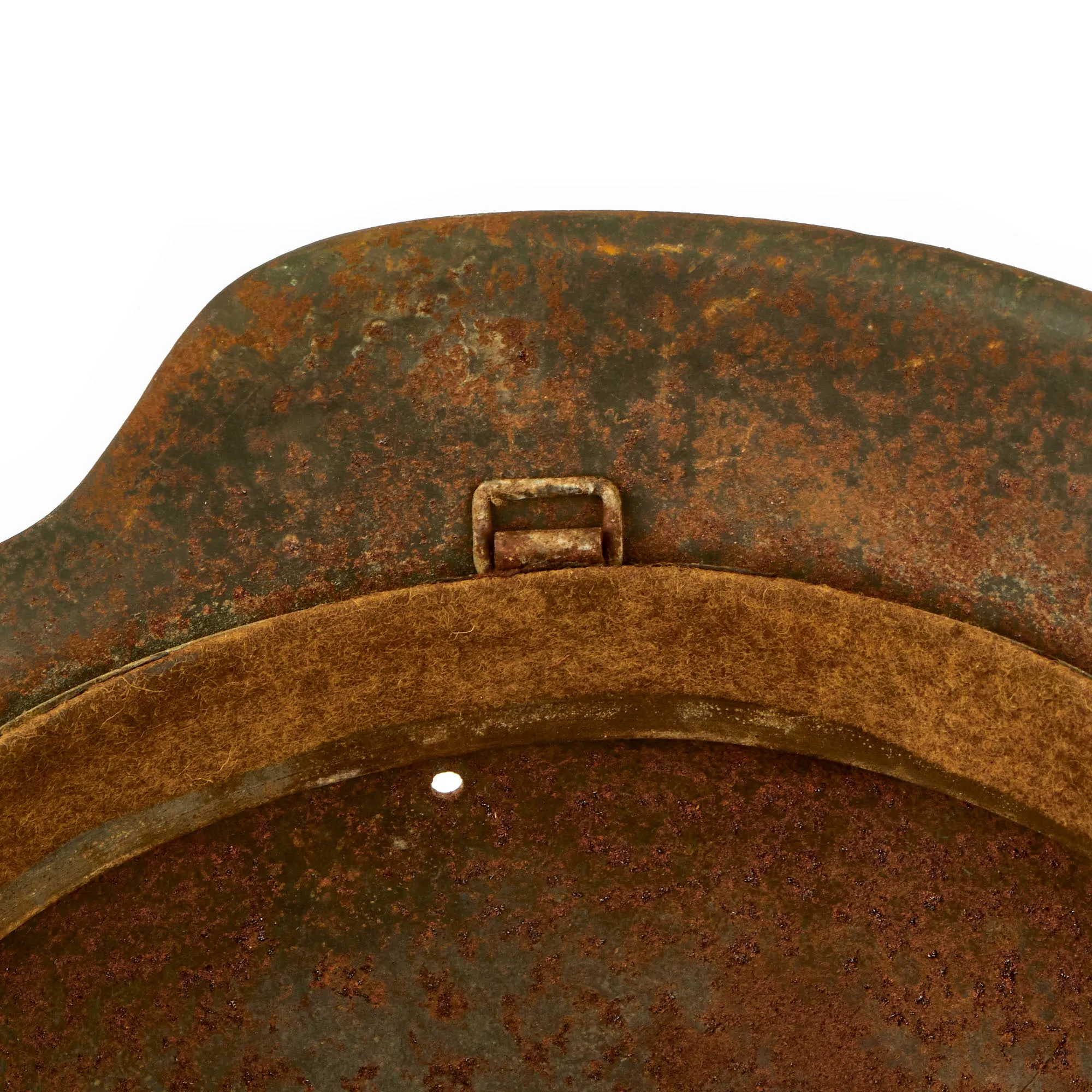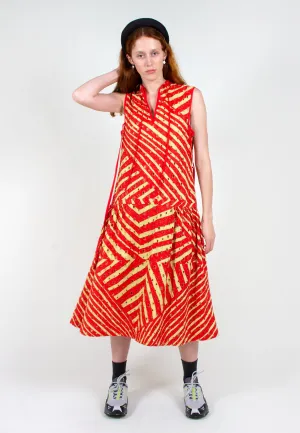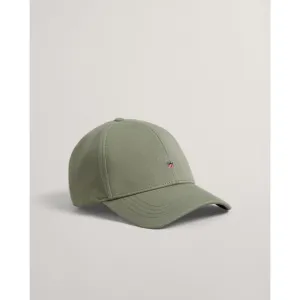Original Item: Only One Available. This lovely "Battlefield Pickup" condition double decal Police helmet is a good example of a late war M42 helmet that was used in WWII. Polizei helmets like this were used by civil police as well as by paramilitary police forces who were deployed as combatants during the war. It still retains the original panzergrau blue gray paint, and has the Double Decals of the NSDAP Civic Police!
The helmet definitely looks to have been out in the elements for some time, which led to near total degradation and loss of the leather of the liner and chinstrap. It also has overall oxidation and other damage related to water and weather exposure. This stamped sheet steel construction helmet retains much of its original paint, but shows scattered oxidation overall, with more in the interior. This suggests it was resting upside down for some time. This helmet features genuine double decals of the NSDAP civic eagle on the left side and the swas on a red shield on the right. The Civic eagle is retained at around 75%, with some large chips, while the shield is close to 90%. Both show oxidation and chipping due to weathering and age.
The reverse, interior, neck guard apron is batch number stamped 1734, however we were not able to locate any maker stamp or size, not uncommon on very late war helmets. Measuring the helmet shows that it is a size 66 shell. This is a nice larger size that can accommodate liners from 58cm to 59cm or US 7 1/4 to 7 5/8. Size 66 shells are harder to find and are therefore more valuable to a collector.
All three liner retaining pins are intact, with exterior paint retained to a varying degree. The interior of the helmet still has the band and padding for the M31 liner, however the leather is completely gone. Due to oxidation we also cannot read the markings on the galvanized steel liner band. There is a small portion of the chinstrap still present on the right side loop.
Overall a very nice 100% genuine "Battlefield Pickup" rare M42 Double Decal NSDAP Civic Police Combat helmet! This is an item that will only continue to appreciate in value over time.
The first "modern" steel helmets were introduced by the French army in early 1915 and were shortly followed by the British army later that year. With plans on the drawing board, experimental helmets in the field, ("Gaede" helmet), and some captured French and British helmets the German army began tests for their own steel helmet at the Kummersdorf Proving Grounds in November, and in the field in December 1915. An acceptable pattern was developed and approved and production began at Eisen-und Hüttenwerke, AG Thale/Harz, (Iron and Foundry Works), in the spring of 1916.
These first modern M16 helmets evolved into the M18 helmets by the end of WWI. The M16 and M18 helmets remained in usage through-out the Weimar Reichswehr, (National Defence Force, Circa 1919-1933), era and on into the early years of the Third Reich until the development of the smaller, lighter M35 style helmet in June 1935.
In 1934 tests began on an improved Stahlhelm, whose design was a development of World War I models. The Eisenhüttenwerke company of Thale carried out prototype design and testing, with Dr. Friedrich Schwerd once again taking a hand.
The new helmet was pressed from sheets of molybdenum steel in several stages. The size of the flared visor and skirt was reduced, and the large projecting lugs for the obsolete armor shield were eliminated. The ventilator holes were retained, but were set in smaller hollow rivets mounted to the helmet's shell. The edges of the shell were rolled over, creating a smooth edge along the helmet. Finally, a completely new leather suspension, or liner, was incorporated that greatly improved the helmet's safety, adjustability, and comfort for each wearer. These improvements made the new M1935 helmet lighter, more compact, and more comfortable to wear than the previous designs.
The Army's Supreme Command officially accepted the new helmet on June 25, 1935 and it was intended to replace all other helmets in service.
More than 1 million M1935 helmets were manufactured in the first two years after its introduction, and millions more were produced until 1940 when the basic design and production methods were changed, replacing the multi-piece riveted vent with one stamped directly into the steel. Later, in 1942 the rolled steel rim was removed from the pattern to further expedite production.




